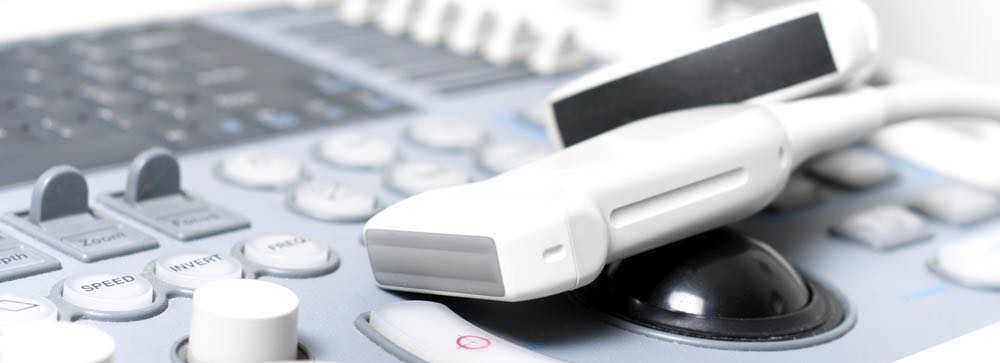A graduate of Gwinnett Tech’s Diagnostic Medical Sonography program, Candice Sellers, B.S., RDMS was awarded top clinical student honors in her class!
Below she shares with us why medical imaging clinical training is so important in your journey to become a sonographer. Take note of her suggestions on how to approach this aspect of your sonography training program.
What is Clinical Training for Sonographers?
Diagnostic Medical Sonography clinical training is one of the most important parts in a student sonographer’s journey. The clinical setting will provide students with the hands-on training and experience that is needed in order to learn how to scan in the ultrasound field.
Most ultrasound programs will have students rotate to multiple clinical sites that provide a variety of exams. During this part of the training there are a few things that students should keep in mind in order to make the most of their clinical time.
My Ultrasound Clinical Experience
The clinical experience can be very stressful at first. The nervousness and anticipation of what to expect during my rotations were at the forefront of my thoughts. However, once I began to get into the flow of the department everything changed. I made sure that I came prepared to learn every day.
There are many objectives that a student should master during their clinical rotations. The three key things that helped me to have an exceptional clinical experience were being proactive, having a team player mindset, and an eagerness to learn.
How To Make The Most of Your Sonography Clinical Experience
Be Proactive
Being proactive within the clinical setting as a Sonographer student is very important. As a student you should be able anticipate the needs of the department. When you arrive at the assigned clinical site, you should pay close attention to the workflow and the specific details that the Sonographers demonstrate to get the job done.
Every department and clinical site is different. You will see practices in one setting that you will not be able to implement in another.
Most ultrasound departments are extremely busy. The sonographers get overwhelmed at times with the stress and the demands of the workload. If the student has paid close attention to the needs of the clinical site they can take more of a proactive approach to helping out.
A good way to take initiative could be as simple as offering to write up patient histories, pulling previous imaging studies up for review, and setting up exam rooms for scheduled procedures.
Have a Team Player Mindset
Most of us will at some point have to work in a group or on a team with other individuals. Working with other team members requires sharing responsibilities in order to complete certain tasks. The student may walk into the department and feel as if they do not need to assist with any of the tasks within the department. This notion is definitely not within the best interest of the student.
When you show up to your assigned clinical site, you want to have the mindset of a team player. The clinical experience is an ongoing interview process. The student should always want to extend any assistance possible to help the sonographers with the responsibilities in the department.
Being a team player helps lighten the load for the sonographers. Demonstrating the team player mindset leaves a lasting impression on your preceptors. This could open up endless future job opportunities for the student.
Show an Eagerness to Learn
In addition to being proactive and having that team player mindset as a student one must have an eagerness to learn. During every single clinical rotation there is an opportunity to learn many skills. You must show up prepared to receive all information that your preceptor has to offer. When I worked in the hospital as a clinical preceptor for the sonographer students I always looked for the student’s willingness to learn. I expected that the student would be prepared to take notes and show interest in wanting to scan.
While in ultrasound school part of the student’s time is in the classroom setting learning the didactic lessons. The clinical portion is where the student must learn to master the hands-on application necessary to become a sonographer. So whenever possible, the student should always ask to scan during their ultrasound clinical rotation.
As mentioned previously, the ultrasound departments are generally busy and the preceptor will have to continue to manage the workflow of the department. The preceptor is there to help guide you during the clinical experience. However, the student must be prepared to take on an active role in their learning journey.
Looking Ahead
Learning to become a Diagnostic Medical Sonographer is very challenging. As a student you are overloaded with so much information in a short period of time. It’s important for the student to understand that developing ultrasound skills takes time. Therefore, the student must be self motivated as they navigate through this journey.
The clinical experience will be one of the most critical components. While in the clinical setting the sonographer student will learn the day-to-day expectations of the profession. Be self motivated and have an open mindset to learn as much as you can. Most importantly, know that over time you will develop and master the necessary skills that are required to become an excellent sonographer.
If you’d like to learn more about opportunities in sonography, check out some of our other inspiring articles and interviews:
- How to Become a Sonographer – Your complete Diagnostic Medical Sonography career guide, from planning your education to advancing in the field.
- Diagnostic Medical Sonographer Career Overview – Career, Salary, and Education Guide
- Ultrasound Technician Degree Guide – There are several different degree levels that are available to pursue, depending on your goals.



